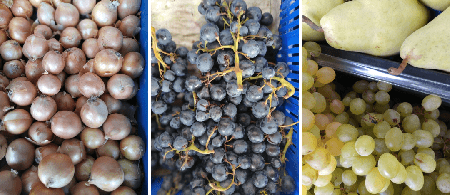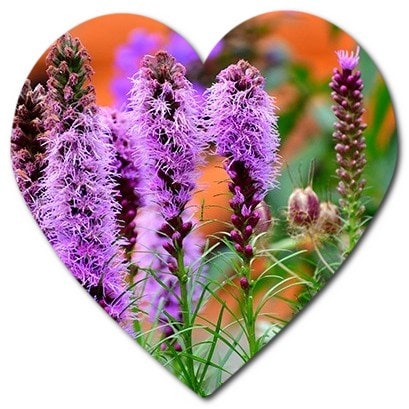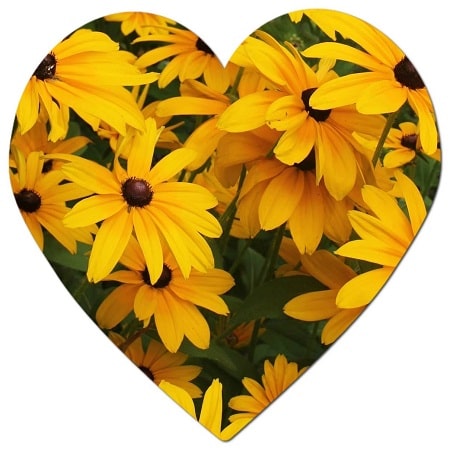Wisconsin has a diverse range of soils, and fertility can vary across different regions of the state. Overall, the fertility of Wisconsin’s soil is influenced by factors such as geology, topography, climate, and land use. In summary, Wisconsin has a mix of fertile and less fertile soils, and the fertility of a particular area depends on various factors. Sustainable agricultural and land management practices are crucial for preserving and enhancing soil fertility across the state. Soil testing and conservation efforts are commonly employed to assess and improve the fertility of specific areas based on their unique characteristics.
Here’s a concise list of plants that grow well in Wisconsin:
- Native Plants for Wisconsin
- Check out a variety of native plants suitable for Wisconsin landscapes, including Sugar Maple and White Pine, providing shade and habitat for wildlife.
- Vegetables for Wisconsin Gardens
- Grow Broccoli, Cauliflower, Cabbage, Collards, Kale, and Kohlrabi in Wisconsin gardens for a thriving vegetable harvest.
- Beautiful Flowers for Gardening
- Consider planting Prairie Smoke, Swamp Milkweed, Black-Eyed Susan, Prairie Phlox, Pale Purple Coneflower, and Butterfly Weed for vibrant gardens.
- Wisconsin Native Plants List
- Explore a list of 18 beautiful native flowers, including White Baneberry, Junebush, and Indigo Bush, well-suited for Wisconsin’s climate.
- Contribute to Nature
- Plant native species like American Elderberry to support local ecosystems and attract diverse bird species.

These plants thrive in Wisconsin’s climate, contributing to the state’s natural beauty and biodiversity.
What vegetables can you grow in Wisconsin?
Wisconsin’s climate and growing conditions are suitable for a variety of vegetables. The state experiences distinct seasons, with cold winters and warm summers. Here are some vegetables that typically thrive in Wisconsin:
- Tomatoes: Planting tomatoes in late spring or early summer is common. Determinate varieties are suitable for shorter growing seasons.
- Peppers: Bell peppers, hot peppers, and other varieties can be grown in Wisconsin during the warmer months.
- Cucumbers: Cucumbers do well in Wisconsin’s summer climate. They are often grown on trellises to save space.
- Zucchini and Summer Squash: These fast-growing vegetables are well-suited to Wisconsin’s short growing season.
- Potatoes: Plant potatoes in early spring. Varieties like Russet and Yukon Gold are popular choices.
- Carrots: Carrots can be planted in early spring or late summer for a fall harvest.
- Broccoli: Broccoli is a cool-season crop that can be grown in spring or fall.
- Cabbage: Cabbage, including red and green varieties, is a hardy vegetable that grows well in Wisconsin.
- Lettuce and Greens: Leafy greens like lettuce, spinach, and kale are suitable for Wisconsin’s cooler seasons.
- Beans: Both bush and pole beans can be grown in Wisconsin, with a planting season from late spring to early summer.
- Pumpkins: Plant pumpkins in late spring for a fall harvest. They are well-suited to Wisconsin’s climate.
- Radishes: Radishes are a quick-growing root vegetable that can be planted in early spring or late summer.
It’s important to consider the specific frost dates in your region of Wisconsin and select vegetable varieties that match the growing season. Additionally, using techniques such as raised beds and row covers can help extend the growing season and protect plants from unexpected frosts. Local gardening centers and agricultural extension offices can provide valuable information on the best vegetable varieties for your specific location.
What plants are in Wisconsin Forest?
Wisconsin’s forests are diverse and home to a variety of plant species. The composition of plant life can vary depending on the specific type of forest, whether it’s deciduous or coniferous, and factors such as soil type and elevation. Here are some common plant species found in Wisconsin forests:
- Deciduous Trees:
- Sugar Maple (Acer saccharum)
- Red Oak (Quercus rubra)
- White Oak (Quercus alba)
- Black Cherry (Prunus serotina)
- Paper Birch (Betula papyrifera)
- American Beech (Fagus grandifolia)
- Coniferous Trees:
- White Pine (Pinus strobus)
- Red Pine (Pinus resinosa)
- Eastern Hemlock (Tsuga canadensis)
- Balsam Fir (Abies balsamea)
- Northern White Cedar (Thuja occidentalis)
- Shrubs:
- High-bush Cranberry (Viburnum opulus)
- Common Elderberry (Sambucus canadensis)
- Serviceberry (Amelanchier spp.)
- Winterberry (Ilex verticillata)
- Wildflowers:
- Trillium (Trillium spp.)
- Jack-in-the-Pulpit (Arisaema triphyllum)
- Bloodroot (Sanguinaria canadensis)
- Blue Cohosh (Caulophyllum thalictroides)
- Ferns and Mosses:
- Maidenhair Fern (Adiantum pedatum)
- Christmas Fern (Polystichum acrostichoides)
- Moss species, such as Sphagnum mosses
- Groundcovers:
- Wild Ginger (Asarum canadense)
- Canada Mayflower (Maianthemum canadense)
- Bunchberry (Cornus canadensis)
- Vines:
- Virginia Creeper (Parthenocissus quinquefolia)
- Wild Grape (Vitis spp.)
These are just a few examples, and the biodiversity in Wisconsin’s forests is extensive. The state’s forests provide habitats for various plant species, supporting a rich ecosystem with a wide range of flora and fauna. If you have a specific type of forest or region in mind, the plant composition may vary, and local field guides or nature centers can offer more detailed information.
What plants are native to Milwaukee Wisconsin?
Milwaukee, Wisconsin, is home to a variety of native plants that have adapted to the region’s climate and soil conditions. Here are some native plants commonly found in the Milwaukee area:

- Prairie Plants:
- Big Bluestem (Andropogon gerardii)
- Little Bluestem (Schizachyrium scoparium)
- Indian Grass (Sorghastrum nutans)
- Purple Coneflower (Echinacea purpurea)
- Black-eyed Susan (Rudbeckia hirta)
- Wetland Plants:
- Swamp Milkweed (Asclepias incarnata)
- Blue Flag Iris (Iris virginica)
- Joe Pye Weed (Eutrochium purpureum)
- Cardinal Flower (Lobelia cardinalis)
- Woodland Plants:
- Woodland Phlox (Phlox divaricata)
- Wild Geranium (Geranium maculatum)
- Jack-in-the-Pulpit (Arisaema triphyllum)
- Solomon’s Seal (Polygonatum biflorum)
- Shrubs:
- Red-osier Dogwood (Cornus sericea)
- Arrowwood Viburnum (Viburnum dentatum)
- Nannyberry (Viburnum lentago)
- Trees:
- Bur Oak (Quercus macrocarpa)
- Red Maple (Acer rubrum)
- Sugar Maple (Acer saccharum)
- White Oak (Quercus alba)
- Eastern Redbud (Cercis canadensis)
- Grasses and Sedges:
- Canada Wild Rye (Elymus canadensis)
- Pennsylvania Sedge (Carex pensylvanica)
- Prairie Dropseed (Sporobolus heterolepis)
- Ferns:
- Christmas Fern (Polystichum acrostichoides)
- Ostrich Fern (Matteuccia struthiopteris)
These native plants play essential roles in supporting local ecosystems and wildlife. When landscaping or gardening in Milwaukee, using native plants can help conserve water, attract pollinators, and maintain the ecological balance of the region. Local nurseries and botanical gardens often offer native plant selections suitable for Milwaukee’s climate and soil conditions.
What flowers are in summer in Wisconsin?
Wisconsin experiences a variety of wildflowers and garden flowers in bloom during the summer months. Here are some common flowers that you might find blooming in Wisconsin during the summer:

- Black-Eyed Susan (Rudbeckia hirta): These bright yellow flowers with dark centers are a staple of summer gardens.
- Purple Coneflower (Echinacea purpurea): Known for their medicinal properties, purple coneflowers have distinctive daisy-like blooms.
- *Monarda/Bee Balm (Monarda spp.): With vibrant hues of red, pink, or purple, bee balm is a favorite among pollinators.
- Butterfly Weed (Asclepias tuberosa): This orange-flowered plant is a type of milkweed, attracting butterflies and other pollinators.
- Daylilies (Hemerocallis): Daylilies come in various colors and bloom throughout the summer, providing a long-lasting display.
- *Liatris/Blazing Star (Liatris spp.): Tall spikes of purple flowers make liatris a striking addition to summer landscapes.
- *Coreopsis (Coreopsis spp.): These cheerful yellow flowers add brightness to gardens and attract butterflies.
- Shasta Daisy (Leucanthemum × superbum): Classic white daisies with yellow centers, shasta daisies are a timeless summer favorite.
- Phlox (Phlox paniculata): Available in various colors, phlox produces clusters of fragrant flowers.
- *Hydrangea (Hydrangea spp.): Big, showy blooms in shades of blue, pink, or white make hydrangeas a popular summer flowering shrub.
- Cosmos (Cosmos bipinnatus): Delicate, feathery foliage and colorful, daisy-like flowers make cosmos a great addition to gardens.
- *Coneflower (Ratibida spp.): Similar to purple coneflowers, different varieties of coneflowers, such as Mexican hat, bloom in summer.
These are just a few examples, and there are many more native and cultivated flowers that thrive during the summer months in Wisconsin. When planning a garden, consider the specific growing conditions in your area, including soil type, sunlight, and moisture levels, to choose the best flowers for your landscape. What are the plant species and flower varieties that grow in Wisconsin?
